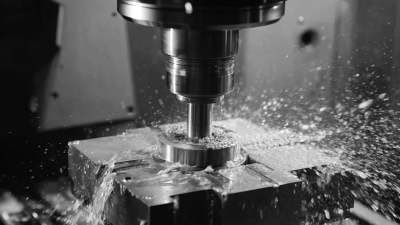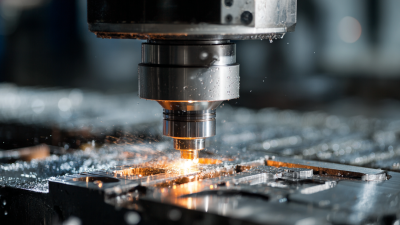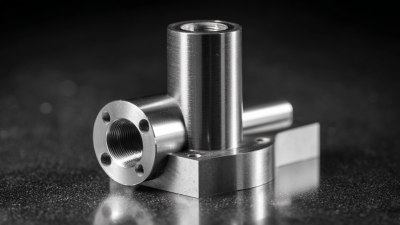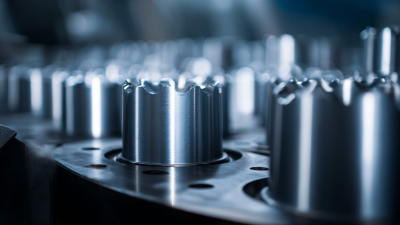In the landscape of modern manufacturing, efficiency and precision have become paramount, leading to the widespread adoption of advanced technologies. One of the most transformative innovations in this realm is the CNC Processing Center, a sophisticated system that combines automation with advanced machining capabilities. According to a report by MarketsandMarkets, the global CNC machining market is expected to reach $100 billion by 2025, highlighting a significant growth trajectory driven by the demand for high-quality manufacturing solutions.

The evolution of CNC processing centers has been a hallmark of modern manufacturing, paving the way for unprecedented efficiency and precision. As industries shift towards smarter and more sustainable practices, the integration of Computer Numerical Control (CNC) systems has become increasingly vital. With the global CNC machining market projected to expand significantly, the demand for advanced processing centers indicates a move towards more automated production lines. These centers not only streamline operations but also enhance the capability to produce complex components with minimal human intervention.
In this context, innovations in CNC technology reflect a broader trend of automation within various manufacturing sectors. For instance, fully automated equipment in surface treatment emphasizes this transition, highlighting the importance of both efficiency and environmental considerations. The rise of intelligent robotics and the use of IoT in conjunction with CNC machinery further exemplifies how modern manufacturing practices are undergoing a transformation, fostering a new era characterized by enhanced productivity and reduced waste. As these technologies converge, manufacturers are poised to benefit from increased flexibility and responsiveness to market demands, defining the future landscape of industrial production.
| Dimension | Description | Impact on Manufacturing |
|---|---|---|
| Precision | CNC processing centers provide high levels of accuracy in machining. | Reduces waste and improves product quality. |
| Speed | Faster machining processes through automation and efficiency. | Increases production rates, allowing for quicker turnaround times. |
| Versatility | Ability to produce a wide range of parts from various materials. | Supports diverse manufacturing requirements. |
| Cost-Efficiency | Reduction in labor costs due to automation. | Improves overall profitability by lowering operational costs. |
| Integration | Can be easily integrated with other manufacturing systems. | Enhances workflow and communication in production processes. |
The integration of advanced digital manufacturing technologies into CNC processing centers has led to significant efficiency improvements across various sectors. Recent reports indicate that implementing CNC technology can enhance production speed by up to 30%, while reducing waste and operational costs by approximately 25%. This optimization is largely fueled by the adoption of automation, real-time data analytics, and artificial intelligence, enabling manufacturers to streamline operations and minimize downtime.
Tips: To fully leverage the capabilities of CNC processing, manufacturers should invest in comprehensive training for their workforce. Equipping employees with skills in digital tools and programming can lead to better utilization of CNC systems and reduced errors in production.
Moreover, embracing the Internet of Things (IoT) within CNC systems allows for improved monitoring and predictive maintenance, which can extend machine life and ensure consistent productivity. Research shows that firms utilizing IoT-enhanced CNC technologies report an average of 15% increase in overall equipment effectiveness (OEE).
Tips: Consider conducting regular assessments of your CNC operations to identify bottlenecks and areas for improvement. Implementing a continuous improvement strategy can significantly elevate both productivity and product quality in the long run.
The integration of CNC processing centers into production lines is rapidly transforming modern manufacturing. As industries seek to enhance efficiency and precision, CNC centers provide an avenue for automating processes that traditionally relied on manual labor. By leveraging advanced computer numerical control technology, manufacturers can achieve higher accuracy in machining operations, reducing waste and rework. This shift not only lowers operational costs but also accelerates production timelines, allowing companies to respond more dynamically to market demands.
The market for CNC processing centers is witnessing significant growth, projected to rise from $245 million in 2022 to nearly $398 million by 2030. Such expansion underscores the increasing recognition of CNC technology's benefits, including its ability to produce intricate designs with minimal human intervention. As industries across sectors, including automotive and aerospace, embrace these advancements, the demand for high-efficiency and eco-friendly solutions continues to drive innovation in CNC manufacturing. The anticipated compound annual growth rate of 6.5% further indicates that CNC processing centers will play a crucial role in the future landscape of manufacturing, fostering a new era of digital manufacturing technologies.
CNC processing centers are transforming the landscape of modern manufacturing by enabling precision, speed, and flexibility across various industries. In sectors such as automotive, aerospace, and electronics, these centers have become integral to manufacturing processes, allowing for the production of complex components with high accuracy. For instance, in the aerospace industry, CNC machines facilitate the creation of intricate parts that meet stringent safety and performance standards, thereby improving overall product reliability.
Furthermore, the global market for processing centers is projected to grow significantly, with a valuation of $29.17 billion in 2018 and an expected compound annual growth rate of 4.9% through 2032. This growth indicates a widespread adoption of CNC technology, extending beyond traditional applications. Industries such as medical device manufacturing and consumer electronics are increasingly utilizing CNC processing for rapid prototyping and mass production, highlighting the versatility of these machines. As manufacturers continue to seek efficiency and cost-effectiveness, CNC processing centers will play a crucial role in meeting the demands of modern production environments.
The future of CNC technology is poised for remarkable advancements, driven by the increasing demand for high-precision and multi-axis machining centers. The global CNC machine tools market is projected to grow significantly, with estimates suggesting a boost of USD 21.9 billion between 2025 and 2029. This growth is attributed to the integration of automation and artificial intelligence (AI), which are redefining operational efficiencies and broadening the capabilities of CNC systems. These innovations enable manufacturers to optimize production processes, reduce downtime, and achieve superior accuracy in machining tasks.
Moreover, the latest trends indicate a shift towards more interconnected and digitally advanced CNC machines. As industries continue to embrace digital manufacturing technologies, the implementation of AI and data analytics is set to enhance decision-making processes, ensuring that manufacturers remain competitive. The combination of these technologies not only revolutionizes traditional manufacturing practices but also paves the way for innovative solutions that can respond rapidly to changing market demands. As CNC technology progresses, it is likely to play a pivotal role in shaping the manufacturing landscape of the future.






